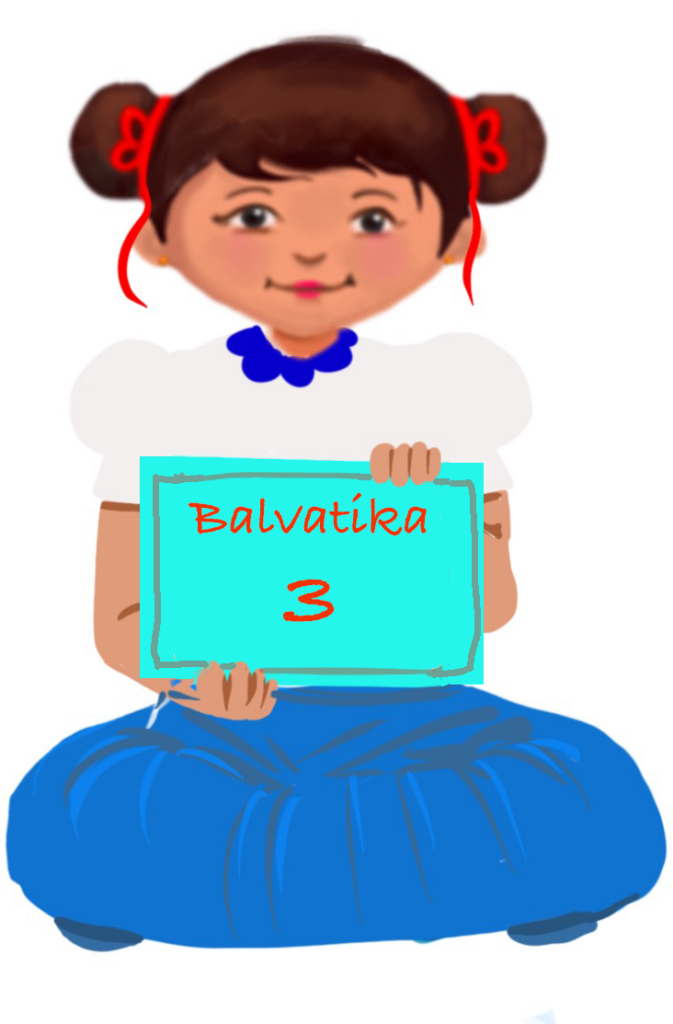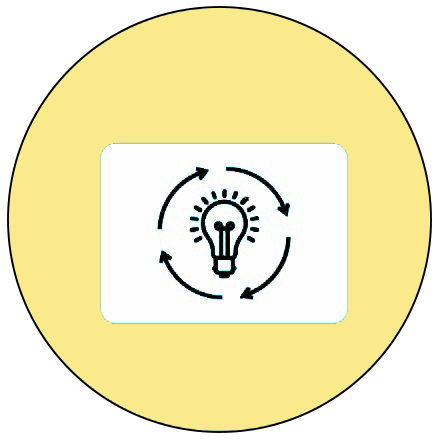
Pre-number Skills
Week 2 – Memory Skills
Learning Outcome
Observes, remembers and recalls the things they see around.
 Objective
Objective
Children will be able to remember, recall, and retrieve the information and use it for further activities or day-to-day life.
 Prerequisites
Prerequisites
Attention span of the students
 Pre-teach Vocabulary
Pre-teach Vocabulary
Colours, animals, birds and things around them.
Introduction
Good Morning, Nano!
Nano was asleep. But it was time to get ready for school.
Mother drew the curtains aside and said, “Good morning! Rise and shine!”
Nano looked out of the window and saw the sun. She knew that the sun was smiling and shining at her. So Nano smiled at the sun and jumped out of bed.
Mother took her to the toilet, brushed her teeth, and bathed her. She dressed her in clean clothes and put on her shoes. Mother said, “Nano, say your morning prayer while I get your breakfast.”
Father was reading the newspaper. Grandpa was watering the flowers while Grandma watched over baby Sahil, who was playing with his toy train. Nano hugged them all and said, “Good morning!” The parrot in the cage said, “Good morning, Nano!” Mother gave Nano a glass of milk and a banana for breakfast.
“Honk! Honk!” The school bus was outside.
“Bye-bye, Mother!” said Nano.
Mother said, “Wait, Nano, you forgot something.”
“Oh! What did I forget, Mother?” asked Nano.
Mother said, “You forgot to pray!”
Nano joined her hands and closed her eyes.
She prayed, “Thank you, God, for everything! Please make me a good girl!”
Then Nano went off to school.
Resources required: Video of the story
Procedure:
- The teacher shows the video and instructs the children to watch and listen to the story carefully.
- After the story, the teacher can show picture cards and ask the students to arrange them in sequence.
- The teacher can add a few pictures that are from the story and some that are not in the story. For example, a picture of an ant and a tiger.
- The teacher can also ask the children to name all the characters of the story.
- A few simple questions can be asked such as, who was reading the newspaper? What did Nano forget?
- Children can draw what they remember from the story and then express their thoughts.
- The children can be encouraged to ask questions to their peers.
Refer to ‘Attention and Focus’ Adaptations and Strategies given in the Main page of ‘Pre-number Skills’ if there are any neuro-diverse children in the class.
Video: Good morning, Nano!
ISL Video: Good morning, Nano!
Story picture cards: Good morning, Nano!
Activity 1: Object Match Challenge
Aim:
To give the children an opportunity to remember and recall through this activity.
Resources required:
Toys, household items, natural objects (2 sets of each).
Setting for the activity:
Can be done indoor or outdoor depending on availability of space.
Type of activity: Group activity
Preparation of activity:
- The teacher divides the materials and keeps them on two trays.
- The same materials used in the two trays are to be kept in a box for matching by the students.
Importance of the activity for children:
Helps in developing:
- Gross motor skills (moving around)
- Fine motor skills (Picking objects, arranging objects)
- Cognitive skills (retain details of each object and engage in memory recall)
- Social skills (interaction and collaboration among children)
- Communication skills (discussions among the children)
Role of the teacher: Facilitator, mentor, observer
Procedure:
- Children sit in 2 groups.
- The teacher keeps one tray covered with a cloth in front of both groups.
- Once the teacher removes the cloth, children are given a minute to look at all the objects.
- After observation as the time completes, the tray is covered with cloth again.
- Children in their groups discuss and collect the materials kept in the box and make the same tray as shown to them.
- The group that could collect all the objects shown will be the winner.
Refer to ‘Working memory’ Adaptations and Strategies given in the Main page of ‘Pre-number Skills’ if there are any neuro-diverse children in the class.
Observation:
The teacher may encourage the children to share their observations and experiences by eliciting answers to questions like the following:
- Did you enjoy this activity? Why?
- Was it difficult to remember the objects?
- Who from your group remembered the most of the objects?
Conclusion:
Children are able to recall the objects seen in the tray.
Suggested Variation in rules:
- The number of items can be reduced or increased depending on the difficulty level.
- Time to observe the tray can be increased.
- The maximum number of items collected can be specified by the teacher.
Cross-Curricular Connection:
- In language class, the questions pertaining to recalling different objects can be connected to the English lesson/s. The teacher may help children expand their vocabulary by introducing new terms.
- In EVS class, children can be encouraged to think of the uses of different objects
- Value education can be imparted by explaining how important it is to focus and remember things or events in day-to-day life.
Video: Object matching challenge
ISL Video: Object matching challenge
Activity 2: Follow the Sequence (Game)
Aim:
To give the children an opportunity to enhance their auditory and visual memory skills by looking at the card and listening to the name called, then recalling the words mentioned.
Importance of the activity for children:
Helps in developing:
- Perceptual skills (access information stored in memory)
- Cognitive skills (auditory and visual processing)
- Social skills (interaction and collaboration among children)
- Communication skills (discussions among the children)
- Gross motor skills (moving around)
- Sequential processing skills (organise information in minds and retrieve it in a systematic manner, which is essential for tasks like reading, problem-solving, and following instructions)
Resources required:
- Colour cards
- Animal picture cards
- Bird picture cards
- Fruits picture cards
Picture cards: Fruits
Picture cards: Birds
Picture cards: Animals
Picture cards: Colour
Setting for the activity:
- Can be done indoor/outdoor depending on the availability of space.
- The teacher may make the students sit in a circle.
Type of activity: Group activity
Preparation of activity:
- The teacher will form groups of 6 children each. (Number of groups will be according to the number of students in the class.)
- Each group will get a different topic to recall and repeat the words.
Role of the teacher: Facilitator, mentor, observer
Procedure:
- The activity begins with group 1.
- The teacher will display different colour cards with the colour part facing upward.
- Students will sit as per the alphabetical order of their names.
- The first student can pick up one colour card and tell the name of the colour. Example: Blue. Then the student will place the card in the same area where he or she picked it up, keeping the coloured side facing downward.
- The second student will pick up another colour card, recall the colour told by the previous student, and tell the colour that he or she has chosen along with the colour blue. (For example, if he or she has chosen green, she or he has to say blue-green.) This student will also place the card in the same area from where he or she picked it up, keeping the coloured side facing downward.
- The third student will listen and remember the two colours picked. She or he will pick up another colour card and say the chosen colour along with the previous two colours in the correct order. For example, if the student has chosen red, she or he has to say blue-green-red. This student will also place the card in the same area from where he or she picked it up, keeping the coloured side facing downward.
- The activity continues till the turn reaches the first person again.
- Colours can be repeated during the activity.
Refer to ‘Sequencing skills’ Adaptations and Strategies given in the Main page of ‘Pre-number Skills’ if there are any neuro-diverse children in the class.
Observation:
The teacher may encourage the children to share their observations and experiences by eliciting answers to questions like the following:
- Did you enjoy the game?
- How did you feel when you played this game?
- Was it easy for you to recall the names in the correct order?
Conclusion:
Children would learn to remember the names and repeat them in the correct order.
Suggested variation in rules:
- The number of students can be increased or decreased depending upon the memory skills of the students.
- All groups begin simultaneously, and a team leader can be appointed to facilitate the game for the children. They can monitor the sequence and identify any mistakes if a child forgets to mention a name in the correct order.
Cross-Curricular Connection:
- In language class: The teacher may introduce new words related to ‘Nature’ to enhance their spoken language skills.
- In art class: The follow-up drawing activity can be linked to the art and craft class. The teacher may also involve children in making a collage of the objects in the picture by providing them marble paper bits, dal, etc.
- In EVS class: The significance of the animals, birds, and fruits used in the picture will be explained.
- Value education: The importance of listening and remembering every detail will be explained.
Video: Follow the sequence
ISL Video: Follow the sequence
Check list for teacher:
| Activity | Yes | No | Sometimes |
| Children can: | |||
| Remember the things they see | |||
| Remember, recall the things they see in a sequence | |||
| Focus on the activity | |||
| Complete the activity in the given time | |||
| Do the activity independently | |||
| Able to express verbally and through actions, expressions or gestures |
Fun Activity: Match the pictures

Assessment
Assessment Type: Drawing
Asset objective: : Children should be able to recall the characters and things from the story ‘Good morning, Nano’ and draw them on the paper/notebook.
Materials required: Paper, notebooks, colours
Procedure:
- The teacher narrates or shows the video of the story.
- Once completed, the children will visualise and draw the objects and characters from the story.
- They can verbalise what they have drawn.
Observation:
The teacher can observe how much the children are able to recollect and recall the story.
Teacher Resource Document
| Source and Attribution of images: All images used in the above Assets and Aids are originally created. |
| This digital material has been developed by the Sri Sathya Sai Vidya Vahini Inclusive Education Project, a unit of Sri Sathya Sai Central Trust, Prasanthi Nilayam, as a collaborative offering in the service of our nation. |